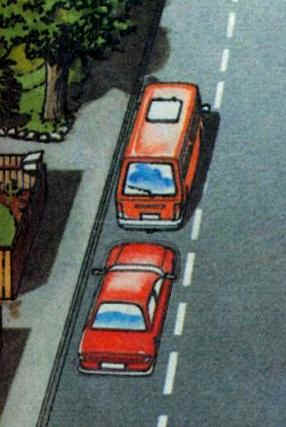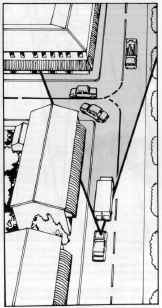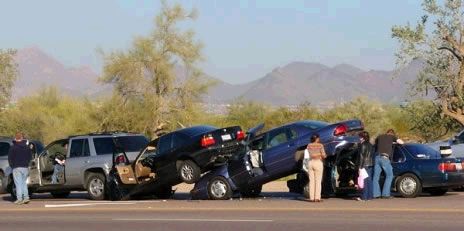Chapter 12: FOLLOWING DISTANCE
DID YOU KNOW?
Next time you are driving in heavy traffic during peak hour remember that there are just 23 Australians per kilometre of road in this country compared with:
30 people per kilometre in Canada
41 people per kilometre in the USA
110 people per km in Japan
154 in the UK
1123 people per kilometre in China
SAFE FOLLOWING DISTANCE
Given the large distance required to perceive and react to hazards plus the braking distance require to stop a car in an emergency. Maintaining a safe following distance is an essential low risk driving technique.The greater the following distance you have from the vehicle in front the more time and space you will have to manoeuvre in. Also by sitting further back you gain greater vision of the road ahead.
Its the double whammy of tail-gating.
By driving too close you have no view of the road ahead and no time to react if the unexpected occurs.
Often the tail-gating driver is trying to intimidate the driver in front into changing lanes. Their eyes trying to make known their aggression to the driver ahead. But in this position they are setting themselves up for an expensive and embarrassing crash should the unexpected occur.

When learning to drive we are taught the time-lapse method of checking our following distance.To apply the time-lapse formula, select a stationary object to the side of the road. Like a tree, or pole as the vehicle in front passes the pole, start counting in your mind, one-thousand and one, one thousand and two. If your vehicle passes this object before this your too close.
This two seconds is the minimum for safe driving.Often other drivers will merge into your safe following distance, it takes a certain amount of tolerance and maturity to fall back and re-establish the correct space.
In certain circumstances a 3 or 4 second following distance may be more appropriate, usually this is when your vision is obscured or driving conditions change.
Situations requiring a greater following distance include;
driving in wet weather, fog, snow, ice
when smoke is across the road
when following a large vehicle
when being followed by a large vehicleon dirt roads
when towing or fully loaded.
If being followed closely by a large vehicle, increase your following distance from traffic ahead, so if you need to brake hard, you can do so more gradually, and thus avoid the unpleasant experience of being run over by the truck.
DRIVING IN FOG
Fog can drastically lower the level of visibility. Adjust your driving speed to the conditions.
Never drive at a speed where the stopping distance required exceeds the distance you can see.
Before entering fog, increase following distance from other vehicles and turn on fog lights if fitted. Also turn on headlights to the low beam or the normal beam setting. Do not use high beam as it will generally light up the fog making the road more difficult to see.
Check lane position and use fog line (or edge line) as a guide to where the road goes. If fog becomes too thick to drive safely, warn other drivers and stop only if a parking spot can be found well off the road.
(Written by Joel Neilsen, Managing Director, Safe Drive Training)




